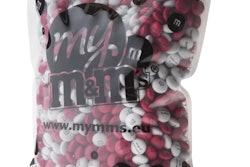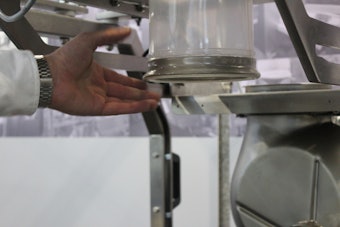Has a focus on regulatory compliance caused drug makers to lose sight of quality? An FDA expert shared his agency’s concerns and requests at the 5th-annual PharmaLink conference at Xavier University in Cincinnati in March.
Ten years ago the FDA created “A Vision for 21st Century Manufacturing.” FDA wanted an efficient, flexible pharmaceutical manufacturing sector producing high-quality drugs without extensive regulatory oversight. Today, FDA is establishing an Office of Pharmaceutical Quality to improve the agency’s scrutiny of brand-name, generic, and over-the-counter drugs, and is calling on industry to offer up metrics to prioritize field investigations, said Russell Wesdyk, Scientific Coordinator for FDA’s Office of Pharmaceutical Science.
Wesdyk has more than 25 years experience and is now working with generic, biotech, and branded segments within the Center for Drug Evaluation and Research (CDER). His conference presentation, “FDA/CDER’s evolving approach to quality and the use for metrics” set the tone for the two-day event. Wesdyk also was open and gracious when fielding all comments and criticisms the Xavier crowd could offer up.
According to Wesdyk, there has been a tremendous increase in field alert reports, recalls have increased dramatically, and drug shortages due to component problems, delays, and capacity issues (quality) are increasing as well.
Industry itself is ultimately responsible for quality, of course. But while some plants are improving facilities, modernizing control platforms and process technologies, and rolling out quality-by-design (QbD) programs, the facts do not support the idea that there has been real improvement.
“Alerts, recalls, and shortage data do not bare out that we are making progress yet—despite what drug makers say about improvements in quality,” said Wesdyk.
Industry’s position, according to Wesdyk, is “all the FDA cares about is compliance to GMPs [good manufacturing practices]. You don't care about quality.” GMPs do matter and, at least in theory, quality is covered in the GMPs, he said. But the agency is thinking that compliance may have become such a focus that drug makers are not sufficiently concentrating on quality—quality of the process, the batch, the packaging, and the distribution. This lack of focus on quality has resulted in recalls, drug shortages, and other impacts on consumers.
“Take a cancer patient on a pretty special drug,” said Wesdyk. “The plant is registering 50 percent of batches failing. Does that sound like a validated process to you? [When that many batches are failing,] you start running into availability issues. But a Form 483 is not going to get that drug in the patient’s hands any faster.”
Form FDA 483 is used by the FDA to document and communicate concerns discovered during inspections. It includes “inspectional observations [that] do not represent a final agency determination regarding your compliance.” A recipient of a 483 should respond to the FDA, addressing each item, indicating agreement, and either providing a timeline for correction or requesting clarification of what the FDA requires.
Compliance with the 483 process is separate from investigating and rectifying the cause of the batch failure, and does not address quality per se. Indeed, a “quality culture” may be the “soft metric” needed to separate the good plant from the problematic, Wesdyk said.
Prioritizing resources
Drug makers that have talked to the FDA say they agree the use of quality metrics promotes responsible practices and a quality-driven corporate culture. Patient groups agree a focus on quality will lead to fewer recalls and quality-related shortages.
But why establish new metrics? The answer, quite simply, is resources. “The FDA is looking at 5,000 sites and more than 45,000 different products,” said Wesdyk. “We are authorized to request quality-related reports prior to an inspection. And we can track a lot of things. The question is, which ones matter?”
Supply chain boundaries are stretching, and even the definitions of words like “quality” need to be agreed upon. Drug quality concerns caused bans on U.S. sales of generic medicines from several Indian manufacturing plants recently and medical device recalls have almost doubled in the past 10 years, according to an FDA report.
At a Bloomberg healthcare summit in February, CDER Director Janet Woodcock described how the FDA is talking with industry to develop data that may signal which manufacturing plants are straying from standards and need inspection. The agency now collects such information only during inspections, and inspectors are often responsible for a wide variety of production facilities—foods, medical devices, pharmaceuticals, and biologics. Woodcock said the thrust of the new effort is to head off potential concerns before the agency wields penalties such as banning products from troubled factories.
Wesdyk explained that being able to predict which plants might be more at risk to produce poor-quality formulations, or which are headed into a situation where there is going to be a drug shortage, could help prioritize field inspectors to concentrate on at-risk sites.
“If those quality numbers were pulled in advance of an inspection, could good numbers warrant a cancellation of the visit?” asked someone in the Pharmalink conference audience. “It just might,” said Wesdyk. “It’s too early to tell. But certainly plants ranked high [for quality] would not be on a priority list to inspect.”
Agreeing on metrics
The problem today, said Wesdyk, is that there are no objective measures that we can track to see if quality is improving. In fact, we don't even have a definition of what “quality” means. “Quality standards just don't exist,” he said.
FDA’s push for metrics is a drive to move away from individual opinion and reactive behavior, which tends to be case specific. “You can see the remarkable level of variability with data, in how it’s collected, and even in who is analyzing it,” he explained. “An inspector with three years’ experience might miss the nuances of soft metrics, where someone 30 years on the job has instincts they can tap into to forestall disaster. And, a plant with responsible quality limits might look less efficient than a plant that leaves greater leeway on what makes a good batch.”
Soft metrics and anecdotal evidence are often frowned upon, but can be useful. Already, if an FDA investigator knows his or her region, he or she is aware when a key quality person is leaving a plant, or when that plant has a major new launch scheduled. When staff leaves or teams from other smooth-running lines are called away to focus on a new project, there’s more likely to be a dip in quality or productivity. Therefore, that plant will likely be more closely watched.
Wesdyk pointed out that other industries, like automotive, hospitals, and foodservice, measure things like employee turnover, hours of training, etc., to gauge quality. “The question is, are high training hours an indication of a commitment to quality, or do they signal repeated failures and employees taking longer to learn? What about the ratio of quality people on the team compared to manufacturing people? What is a good ratio? What ratio might trip an alarm?” he asked.
“We have to be efficient. Can we find metrics where the bang for the buck is high? “asked Wedyk. “Can we establish an adequacy for downgrading, where meaningful metrics demonstrate the FDA can back off on inspections?”
One industry concern might be the fear of having to track even more data in order to be in compliance. Wesdyk emphasized that this quality-metrics initiative does not require any additional information; everything is already included in the GMPs.
FDA needs “to find a common language for defining and measuring quality for products, sites, and systems. How do we define it? Which data do we [in FDA] collect? Which data do we audit? And do we do it for all drugs, everywhere, in all countries?” he asked.
Both the agency and industry have a general consensus on some baseline-acceptable metrics, but are still seeking opinions. It is a long process and the metrics have to be leading, not lagging, said Wesdyk. They should be used to influence an action.
“You are talking about quality, reliability, repeatability, QbD,” said one Pharmalink attendee.
“Your control of the process, knowledge of failure modes,” added another.
“Know your process,” chimed in one without raising a hand or standing.
“Understand your equipment and its performance,” said another. “Are your preventive maintenance and scheduled shutdowns happening, or are you being pressed to produce?”
If a plant focuses on process control, the metrics that result will be good. Process control will drive these positive quality metrics. But metrics will never drive quality—at least that's what industry was trying to tell the FDA at Xavier University.
Perhaps vendors of chemical processing solutions and software architecture should reach out to the FDA to sketch out just what kind of data is routinely visible, and just what a “quality” metrics dashboard should look like.


























